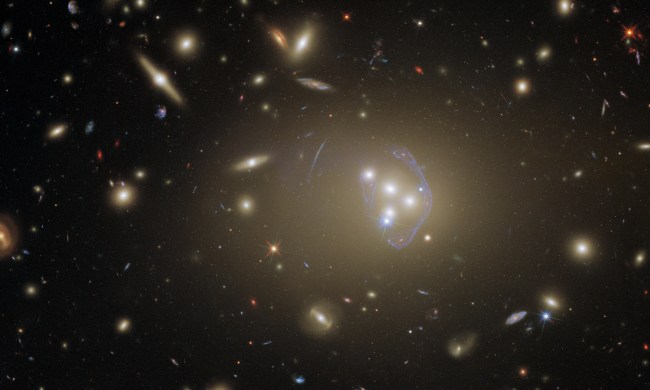The vastness of the universe is hard to comprehend, let alone map, but a cosmological project from the National Science Foundation’s NOIRLab aims to do just that. The Dark Energy Spectroscopic Instrument (DESI) is designed to create a 3D map of millions of astronomical objects, and an early release of data from the project combines the thousands of exposures taken by the instrument during its validation phase in 2020 and 2021. It contains nearly 2 million objects.
The video below shows part of the survey validation data, with detailed portions of the sky shown in 20 different directions. Each “beam” of light is one part of the data, showing objects like stars, galaxies, and quasars. There are over 700,000 objects in this 3D map, and as impressive as that is, this represents just 1% of the total volume that will be mapped out in the DESI survey.
Within the data released so far, astronomers have already made discoveries about the objects identified. “We observed some areas at very high depth. People have looked at those data and discovered very high redshift quasars, which are still so rare that basically any discovery of them is useful,” said Anthony Kremin of Berkeley Lab, lead of data processing for this release, in a statement. “Those high redshift quasars are usually found with very large telescopes, so the fact that DESI — a smaller, 4-meter survey instrument — could compete with those larger, dedicated observatories was an achievement we are pretty proud of and demonstrates the exceptional throughput of the instrument.”

DESI is located in Kitt Peak National Observatory in Arizona, and uses 5,000 fiber-optic “eyes” to look out into space and to see light coming from distant galaxies. But it doesn’t work like a camera — you can’t just point it at the sky and click. Instead, the data requires extensive processing.
“If you looked at them, the images coming directly from the camera would look like nonsense – like lines on a weird, fuzzy image,” said data architect Laurie Stephey in a statement. “The magic happens in the processing and the software being able to decode the data. It’s exciting that we have the technology to make that data accessible to the research community and that we can support this big question of ‘what is dark energy?’”
The way that this instrument can help understand dark energy is all about the huge volume of data it will collect. It will detect light from more than 40 million objects and build them out into a 3D map. Because light takes light to travel and because the universe is expanding, the more distant an object is, the more redshifted its light is — so by comparing the redshift of different objects, cosmologists can build up a picture of the expansion of the universe. That can help understand dark energy, which is the unknown force driving the expansion of the universe.
DESI is continuing to collect data, and has so far observed 26 million objects in the second year of its five-year program.



